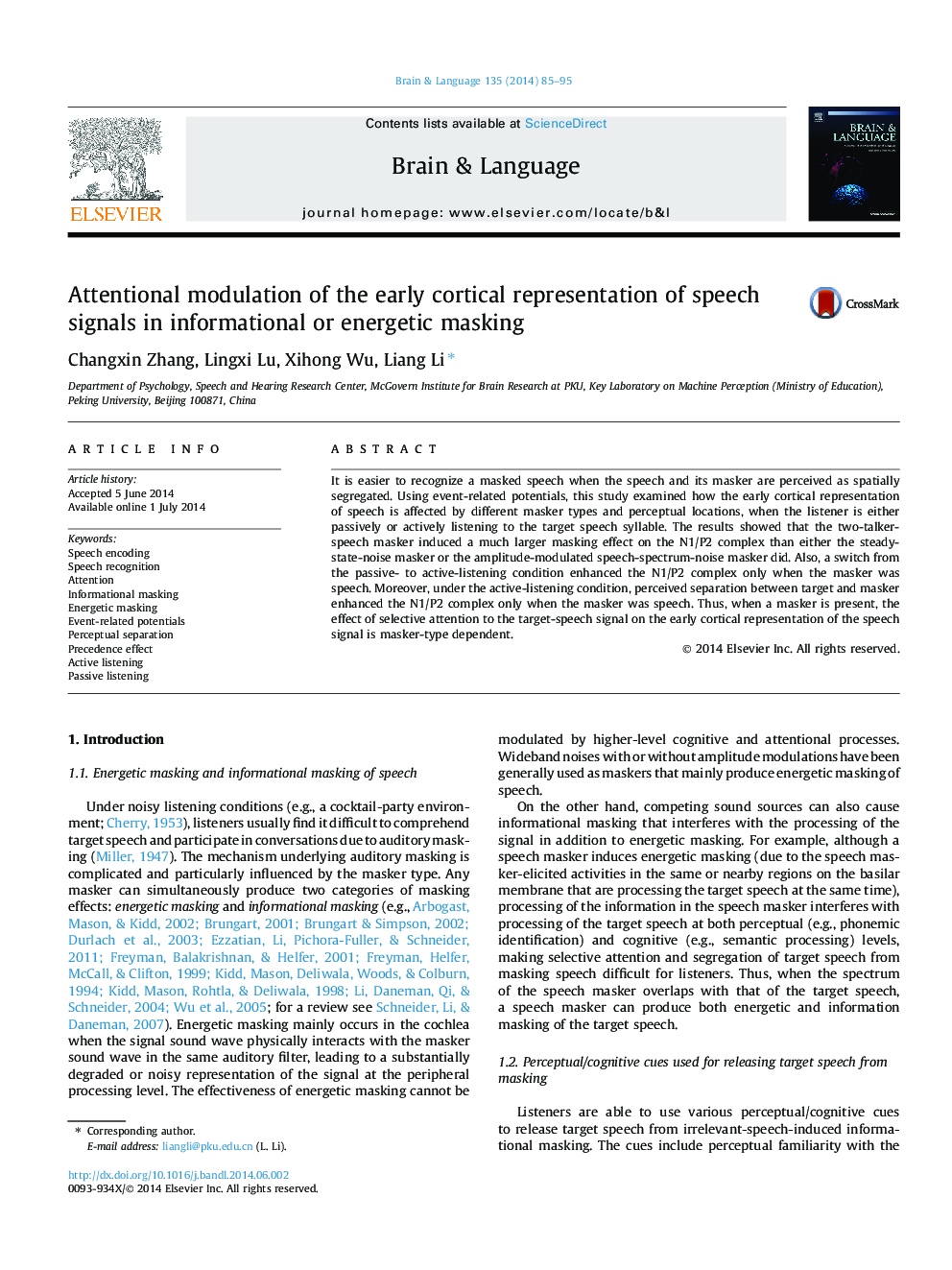| کد مقاله | کد نشریه | سال انتشار | مقاله انگلیسی | نسخه تمام متن |
|---|---|---|---|---|
| 925281 | 1474045 | 2014 | 11 صفحه PDF | دانلود رایگان |
• Speech masker induces larger masking of ERPs to target syllable than noise masker.
• Active listening enhances ERPs to target syllable under speech masking conditions.
• Perceived target-masker separation releases the ERPs to target from speech masking.
• Informational masking differs from energetic masking in its cortical mechanisms.
• Attention releases cortical representations of speech from informational masking.
It is easier to recognize a masked speech when the speech and its masker are perceived as spatially segregated. Using event-related potentials, this study examined how the early cortical representation of speech is affected by different masker types and perceptual locations, when the listener is either passively or actively listening to the target speech syllable. The results showed that the two-talker-speech masker induced a much larger masking effect on the N1/P2 complex than either the steady-state-noise masker or the amplitude-modulated speech-spectrum-noise masker did. Also, a switch from the passive- to active-listening condition enhanced the N1/P2 complex only when the masker was speech. Moreover, under the active-listening condition, perceived separation between target and masker enhanced the N1/P2 complex only when the masker was speech. Thus, when a masker is present, the effect of selective attention to the target-speech signal on the early cortical representation of the speech signal is masker-type dependent.
Journal: Brain and Language - Volume 135, August 2014, Pages 85–95
